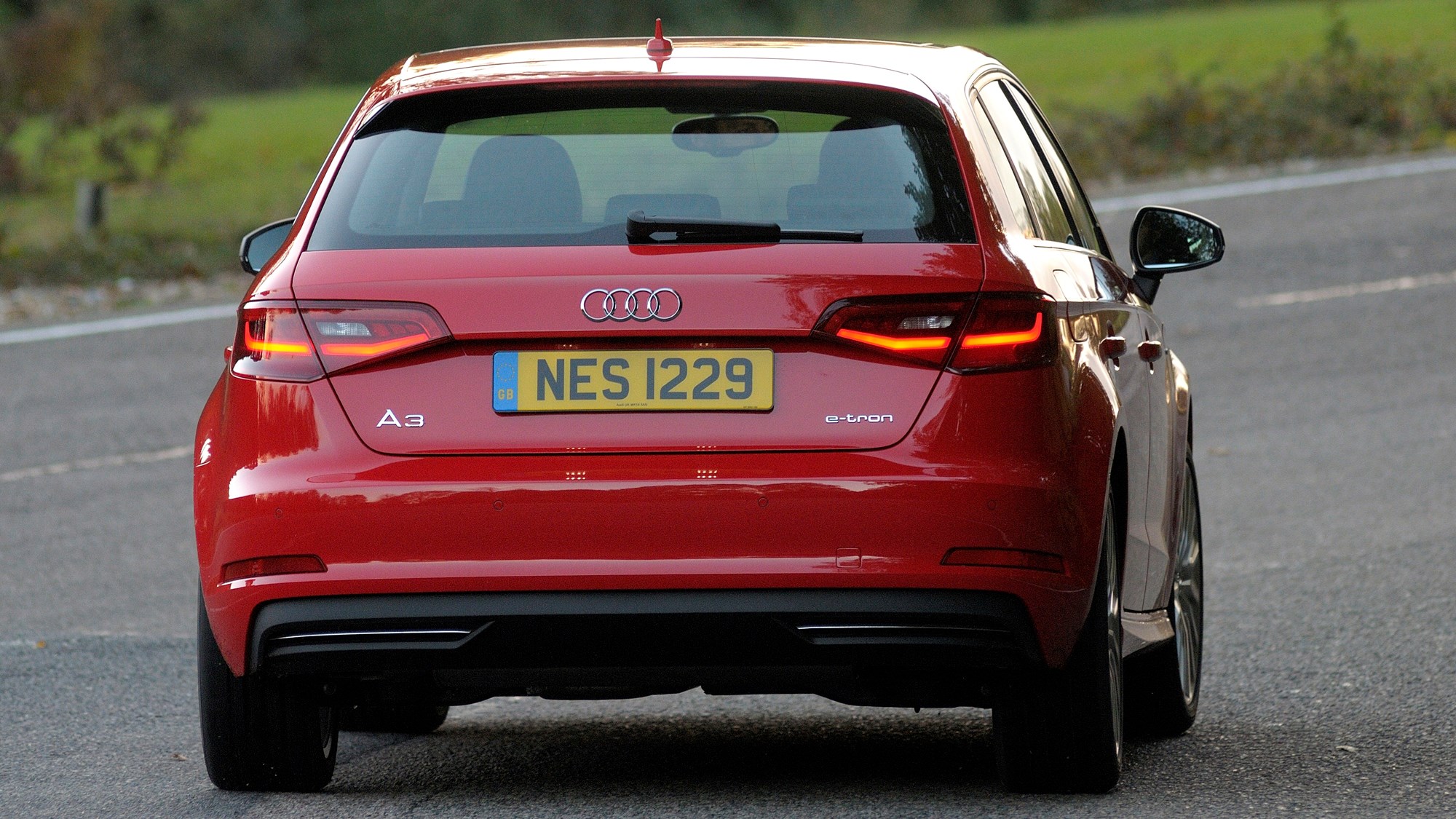► PHEV previous-gen A3 e-Tron tested
► Hot-hatch power, eco economy
► Closest thing yet to an electric A3
On the surface, the 2013-2020 Audi A3 Sportback e-Tron looks much the same as any other A3 from this era. But beneath it lies the beating heart of a plug-in hybrid powertrain nicked from the Mk7 Volkswagen Golf GTE.
If you look carefully, there are a few clues that spell out its zero-emissions capability. Up front, there’s a chrome grille, round the side are aero-friendly 19-inch alloys, and at the back is a subtle e-Tron badge.
After a new Audi A3 plug-in hybrid? Read our Audi A3 40TFSIe review
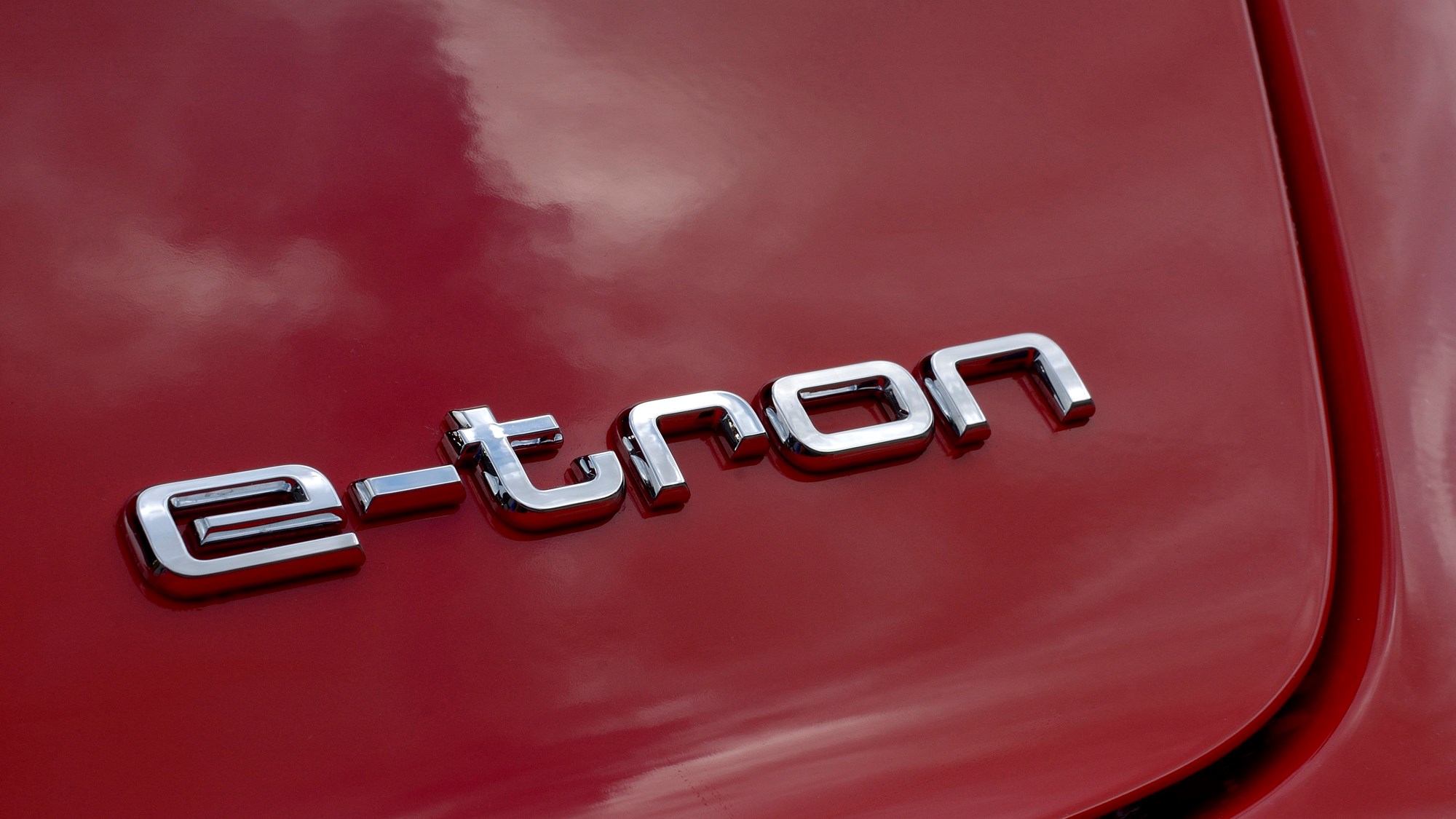
The best hybrid cars on sale
How powerful is the plug-in hybrid system?
Under the conservative skin is a 148bhp 1.4-litre petrol four-pot teamed with a 99bhp electric motor, while under the rear seats – but, critically for boot space, ahead of the rear axle – is a lithium-ion battery pack.
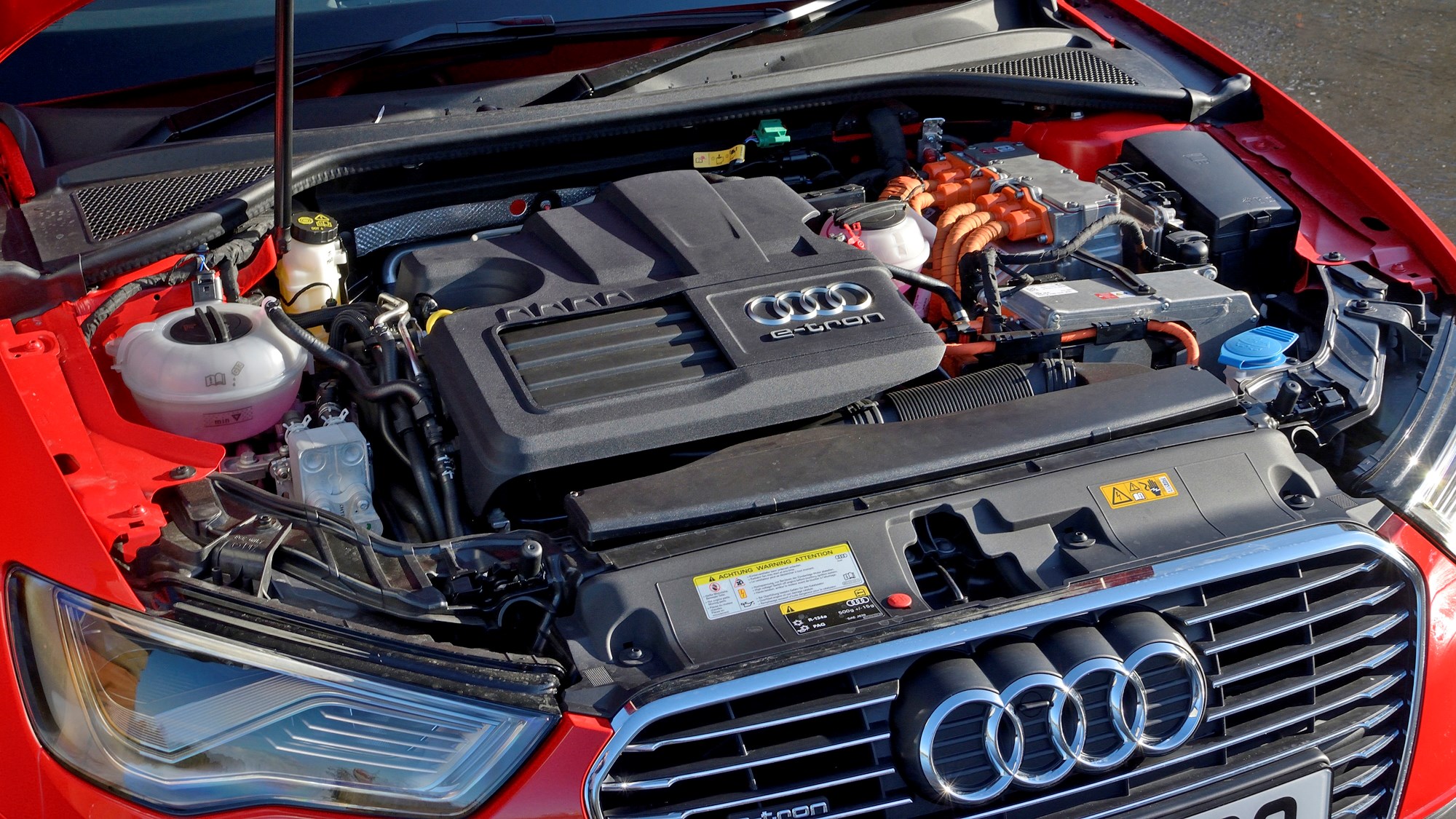
Total combined output? A handy 202bhp – the most powerful A3 of its time, barring the pumped-up S3 and RS3 – yet with a claimed 188mpg and CO2 emissions of just 35g/km, it’s supposedly more efficient than a contemporary plug-in Toyota Prius.
With a 584-mile theoretical total range, and a promise of up to 31 miles of propulsion under electric power alone, the e-Tron certainly competes well with even newer PHEVs. So far it’s also the closest thing Audi has ever launched to a fully electric A3 – in fact, Audi now reserves the e-Tron name for pure electric models, with its latest PHEVs badged TFSIe.
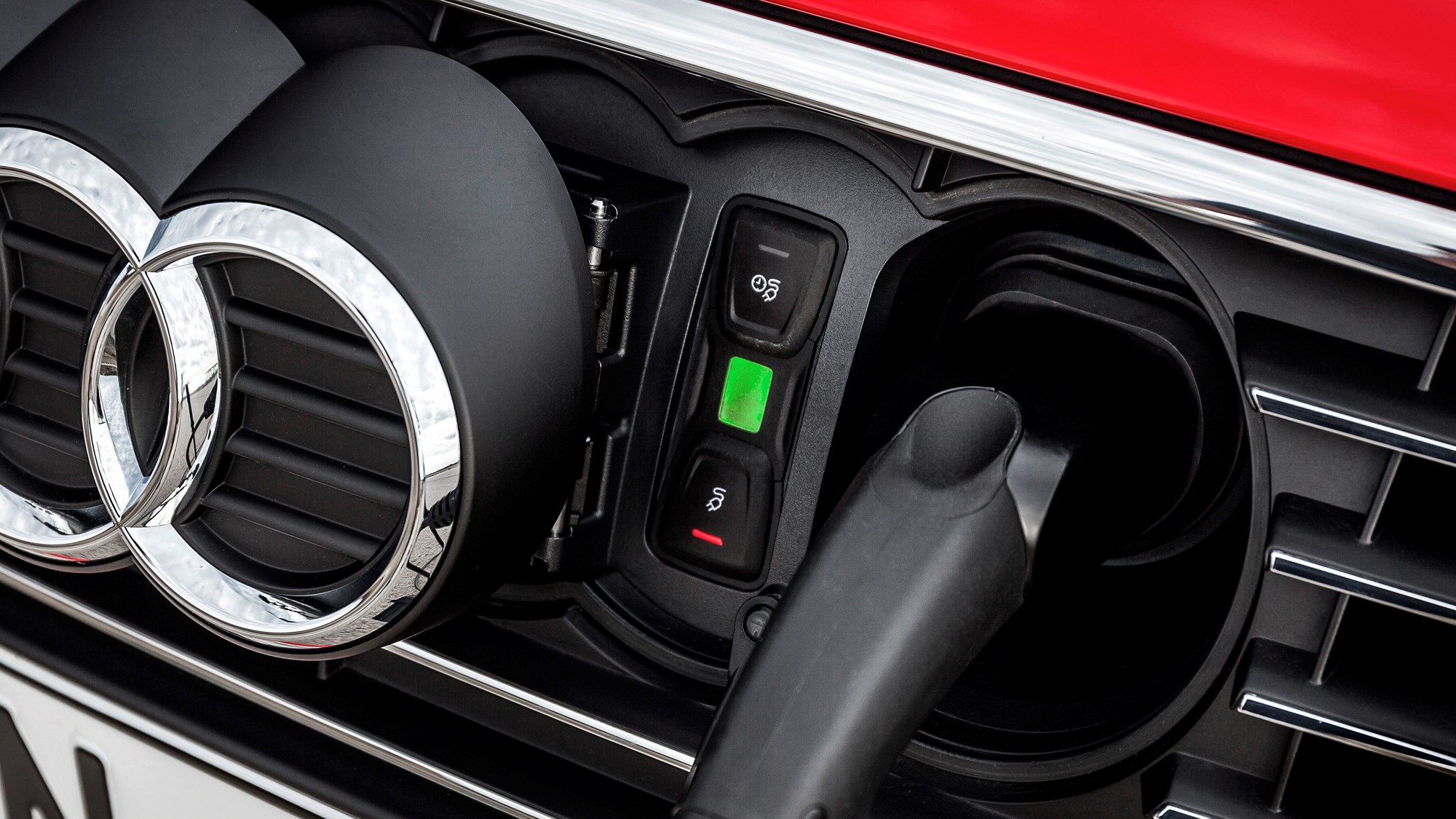
Charging the A3 e-Tron is a doddle, too, with a Type-2 socket very neatly housed behind the four rings on the grille. It might not be as flashy as the drop down panel on the latest e-Tron SUV range, but the access is more convenient.
What’s the A3 e-Tron like to drive?
EV mode is the default setting when you set off, but you can actively select electric or petrol drive on the move as well. Say you’re driving from Birmingham to London: you can save the electric power for the capital’s congestion zone, sipping petrol instead on the motorway, where the engine is at its most efficient.
The e-Tron will take such a journey in its stride, too. The driving position is identical to the regular A3, apart from a few buttons and the green-backlit instruments.
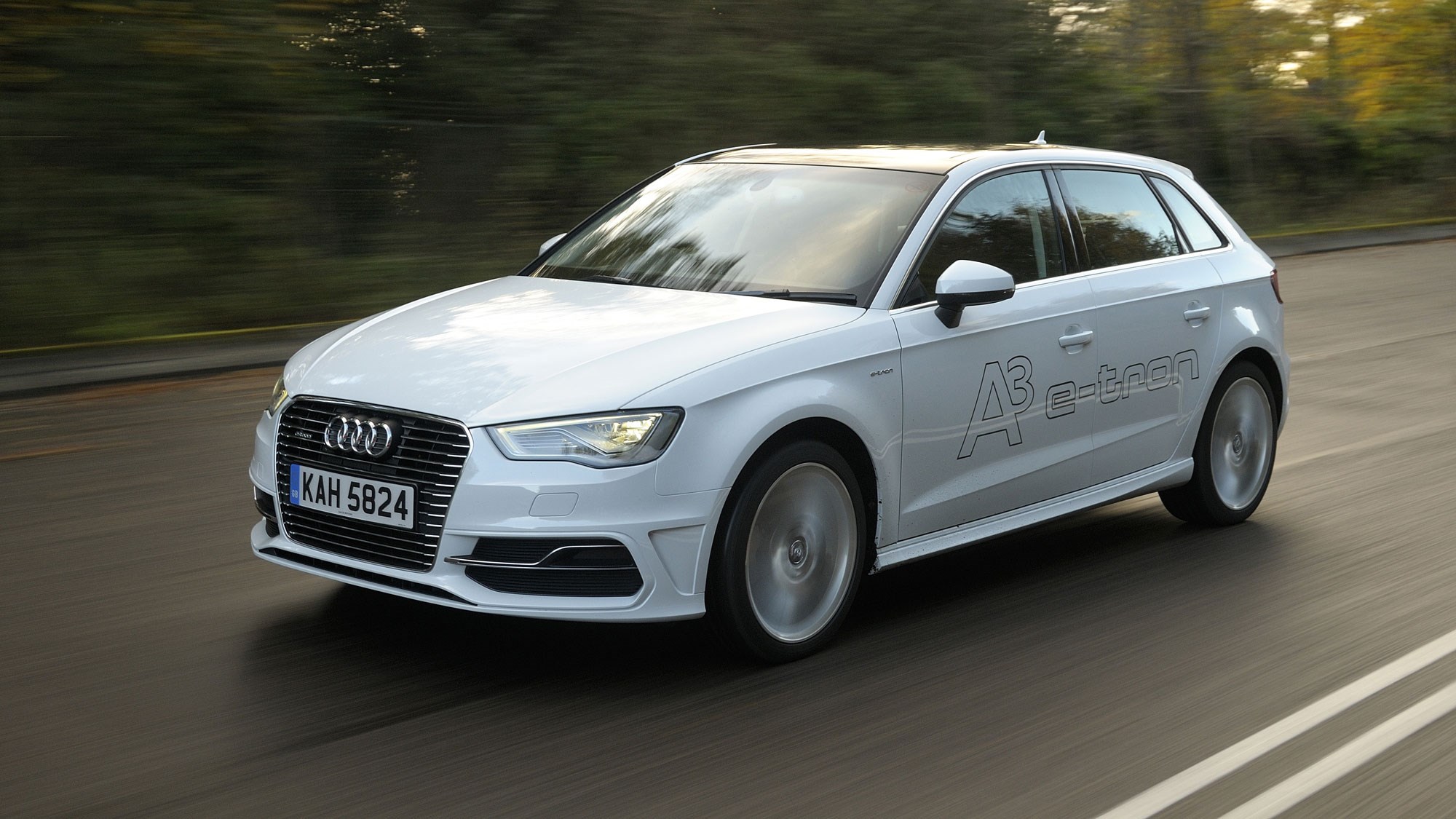
The wheel-mounted shift paddles, no longer necessary for gearchanges, can now be used to select the amount of regenerative braking desired, so you can top up the battery as much as you want or use full power. It’s not quite one-pedal driving, but it can reduce the frequency you call upon the brake pedal to all but the most abrupt of stops.
In EV mode there’s little noise, but the instant torque is great for gaps in traffic. It’s a smooth transition when the petrol engine takes over, but the superb refinement (as opposed to silence) is maintained. Here the throttle’s responsive, and the A3’s quick, with a 7.6sec 0-62mph claim.
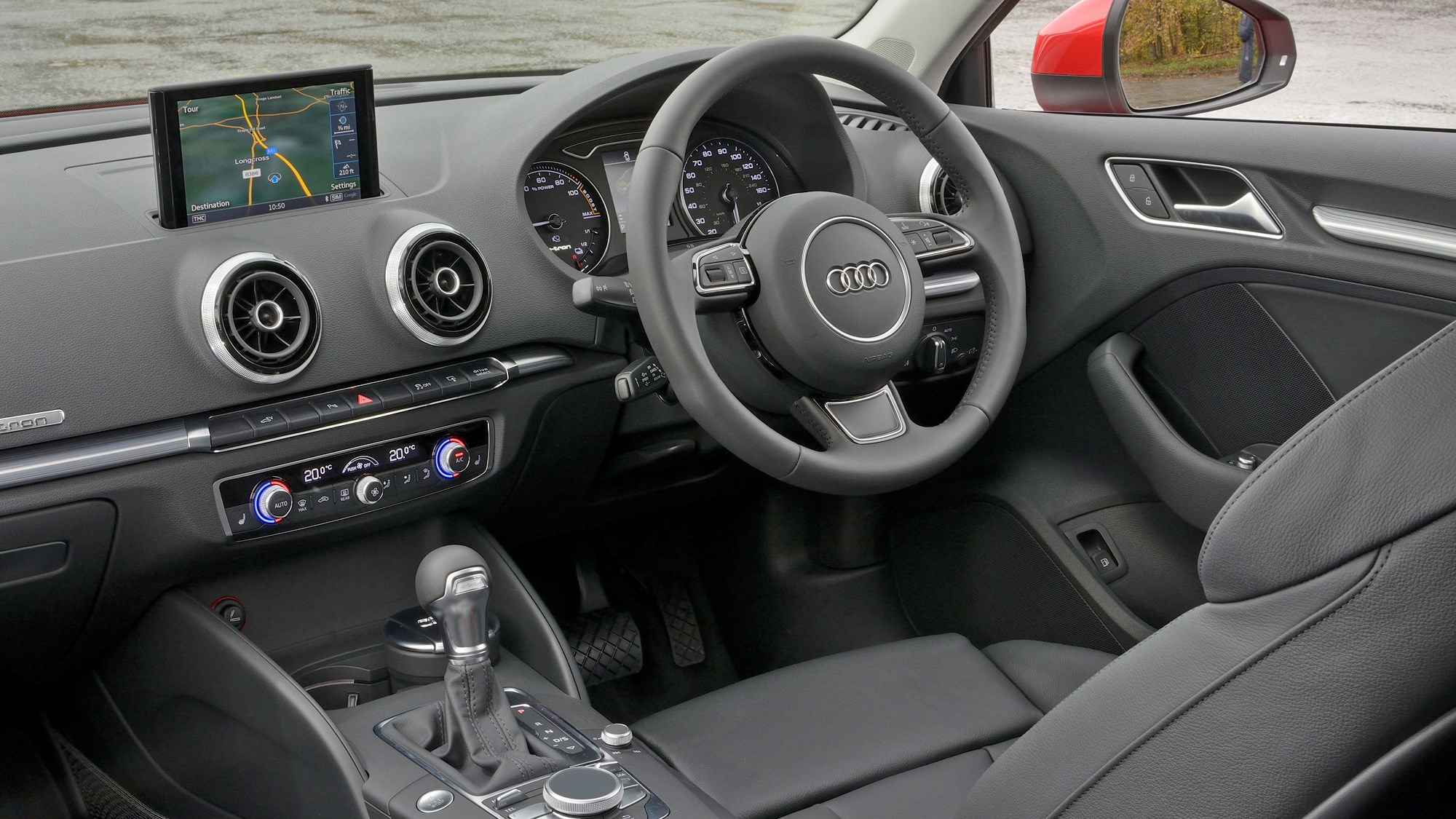
When it comes to corners, the steering is responsive, but lacking feel – no change from any other A3 of this era – while there’s a surprisingly comfy ride, good body control and firm roadholding. Even in the wet it still grips well, but it feels heavier than a regular A3 (it’s 349kg heftier, in fact) under throttle and around corners. In isolation it doesn’t feel overweight though.
You can also drive the e-Tron at proper speeds in EV mode: it comfortably manages motorway speeds with zero emissions no trouble at all, although doing so does sap the battery’s reserves rather quickly. Blend in brilliant levels of refinement and Audi’s built a genuine, premium eco-hatch.
Is it worth buying a used one?
So, the A3 E-tron was progress for Audi, but more of a tentative step than a revolution, especially given sales of this generation ended in 2020 – the latest A3 Sportback TFSIe is already on sale.
Still, it has the advantage of familiarity while being a subtle execution rather than a grandiose statement.
Late models were the darlings of leasing companies. So expect to find hundreds of three-year old cars with full service histories and low mileages flooding the used car market. If you can find one at a good price and you can regularly charge, the A3 e-Tron hybrid is definitely worth a look.
Read our review of the latest Audi A3
